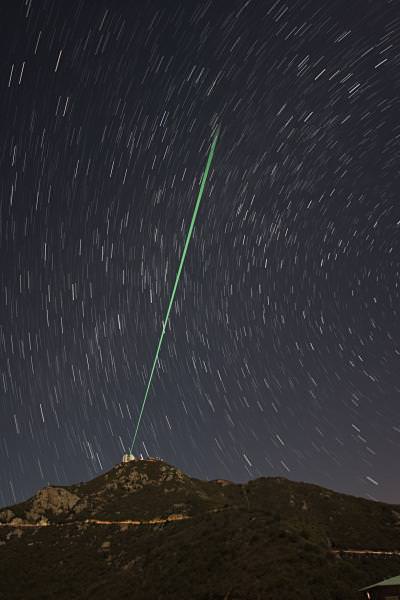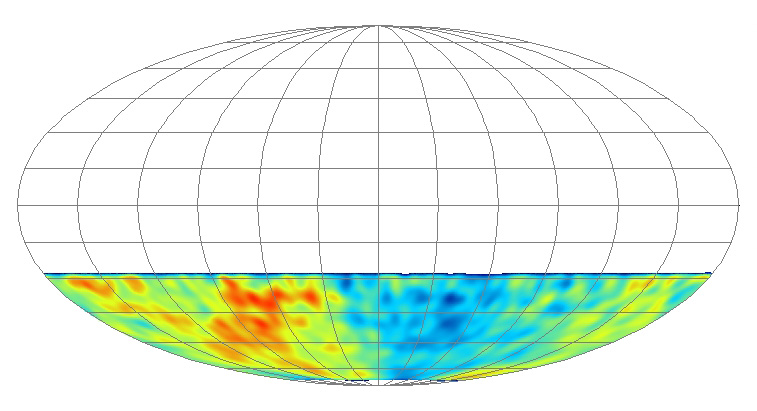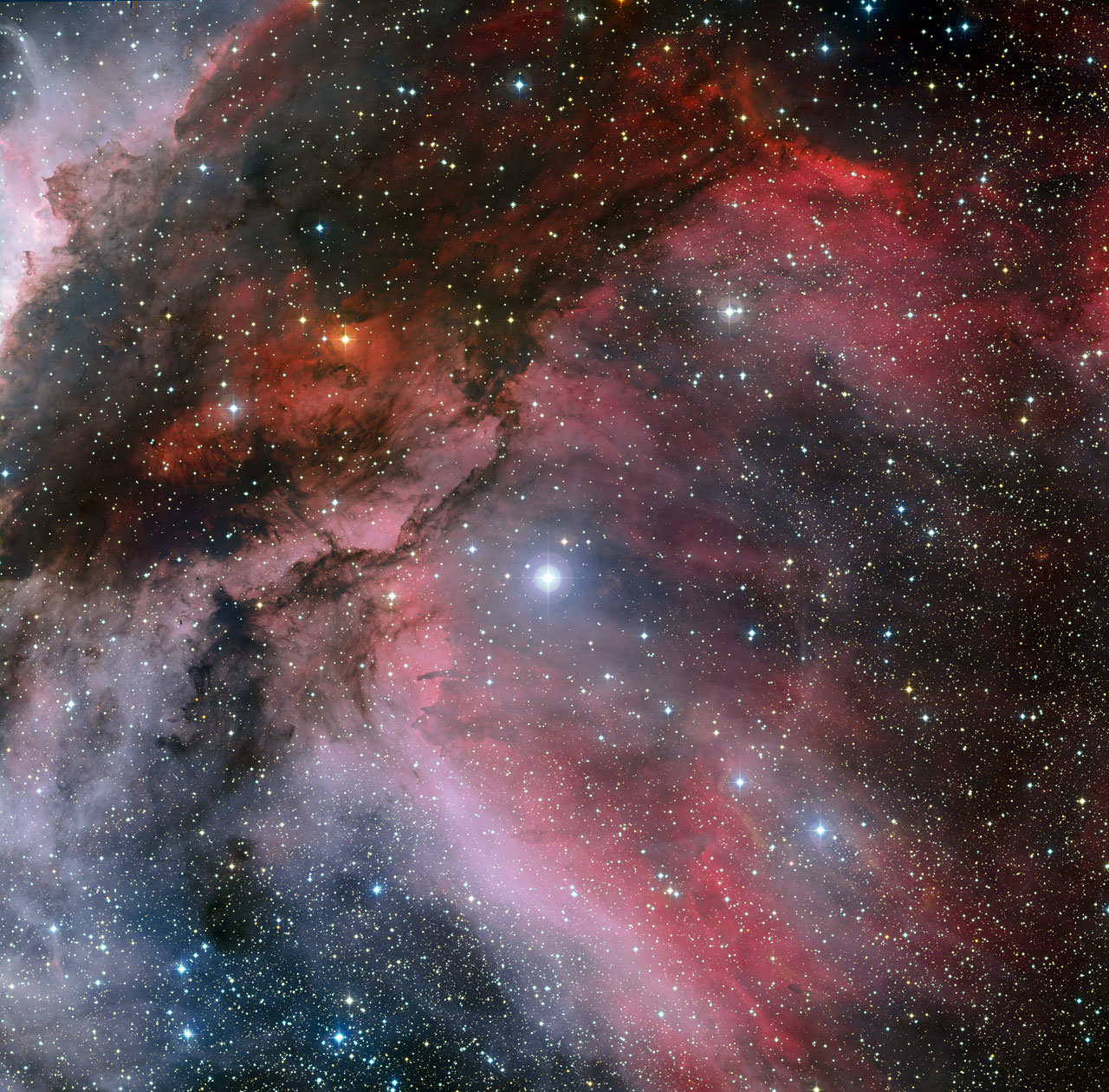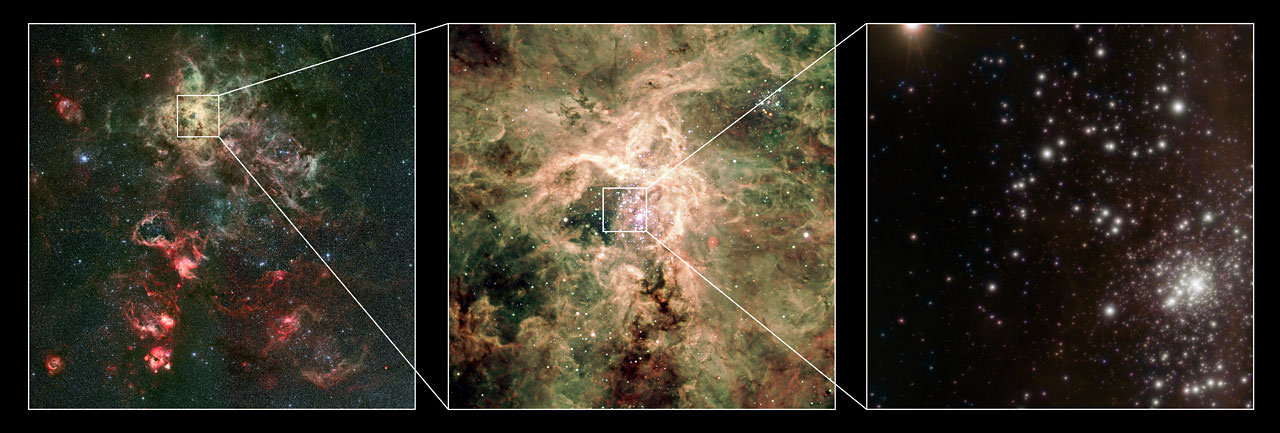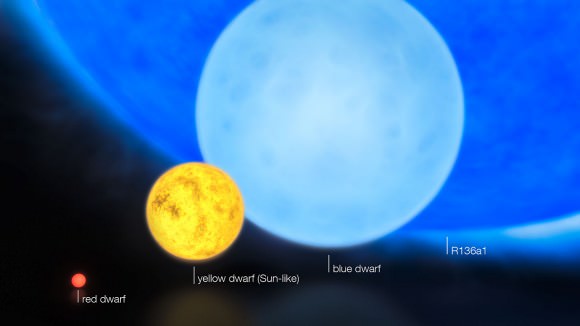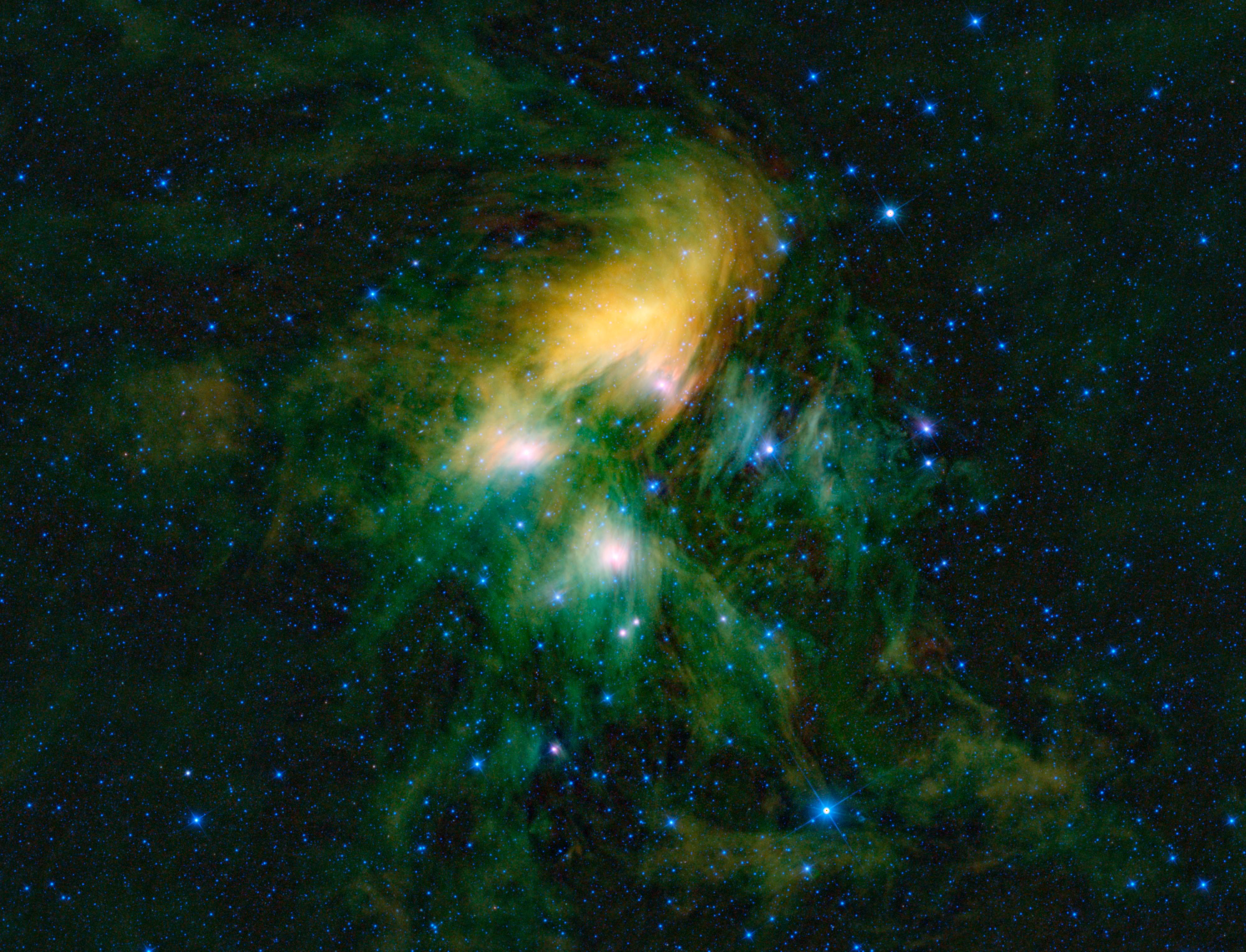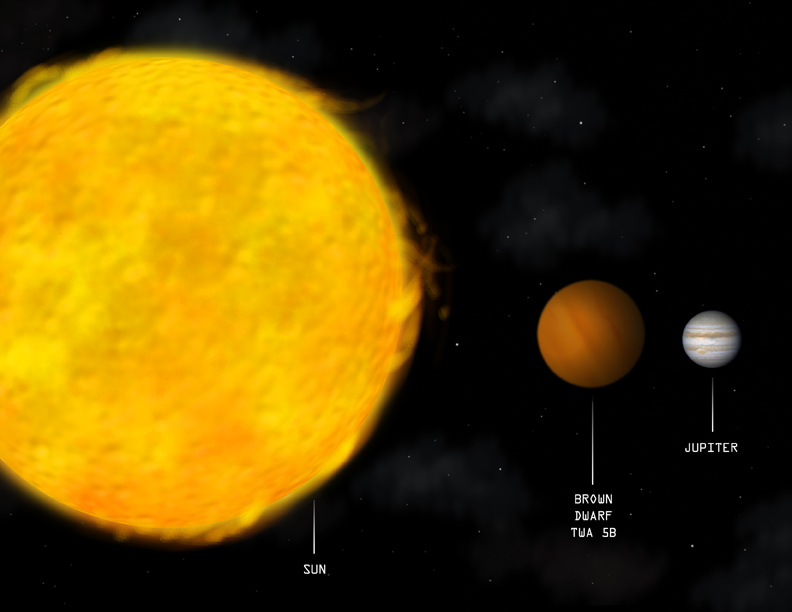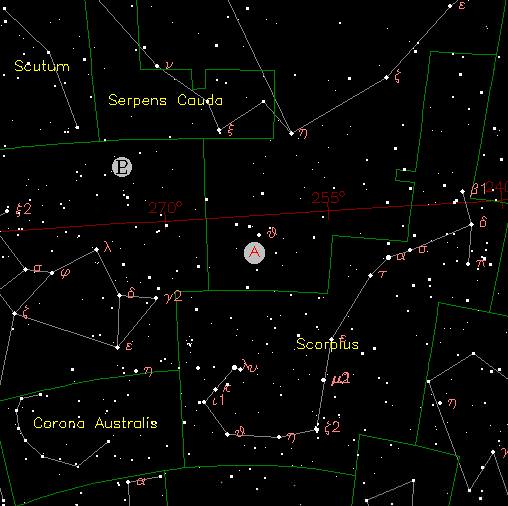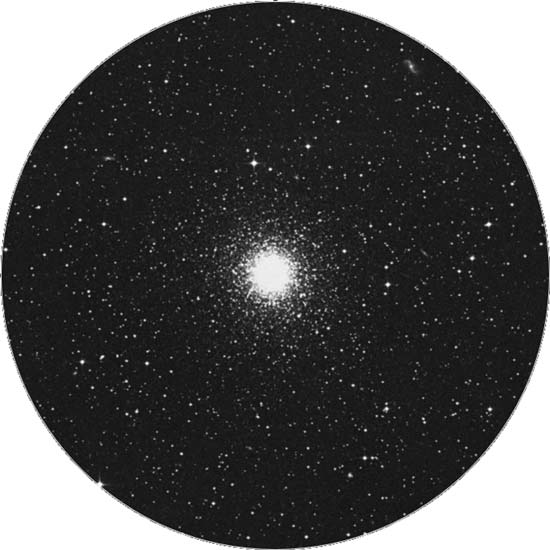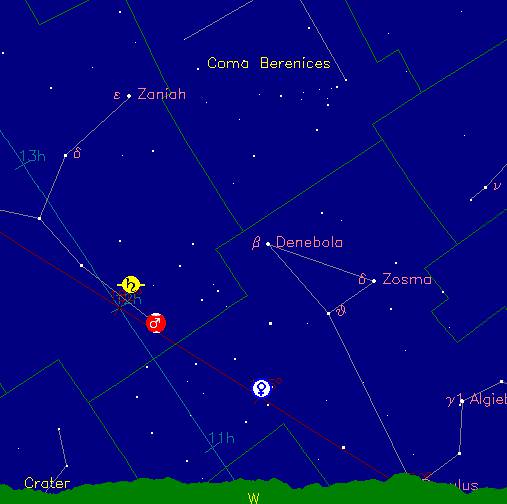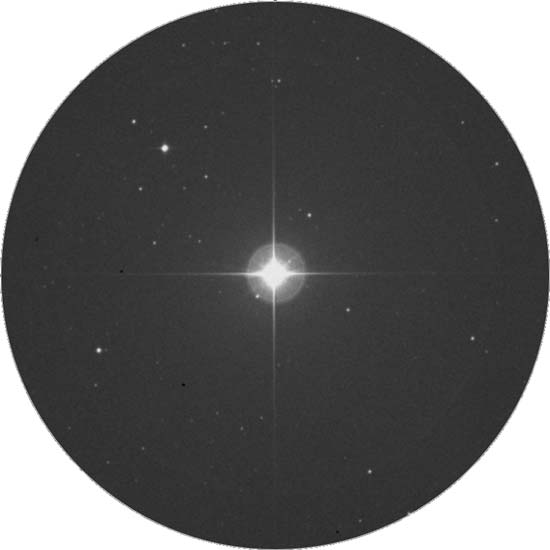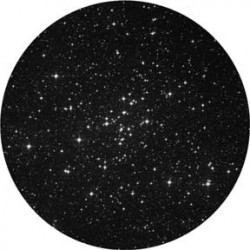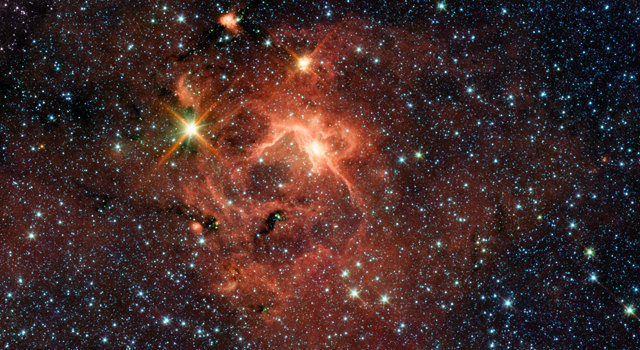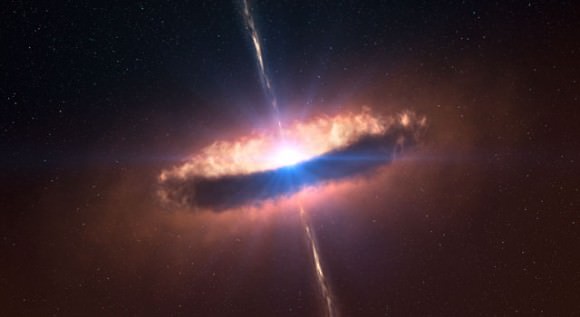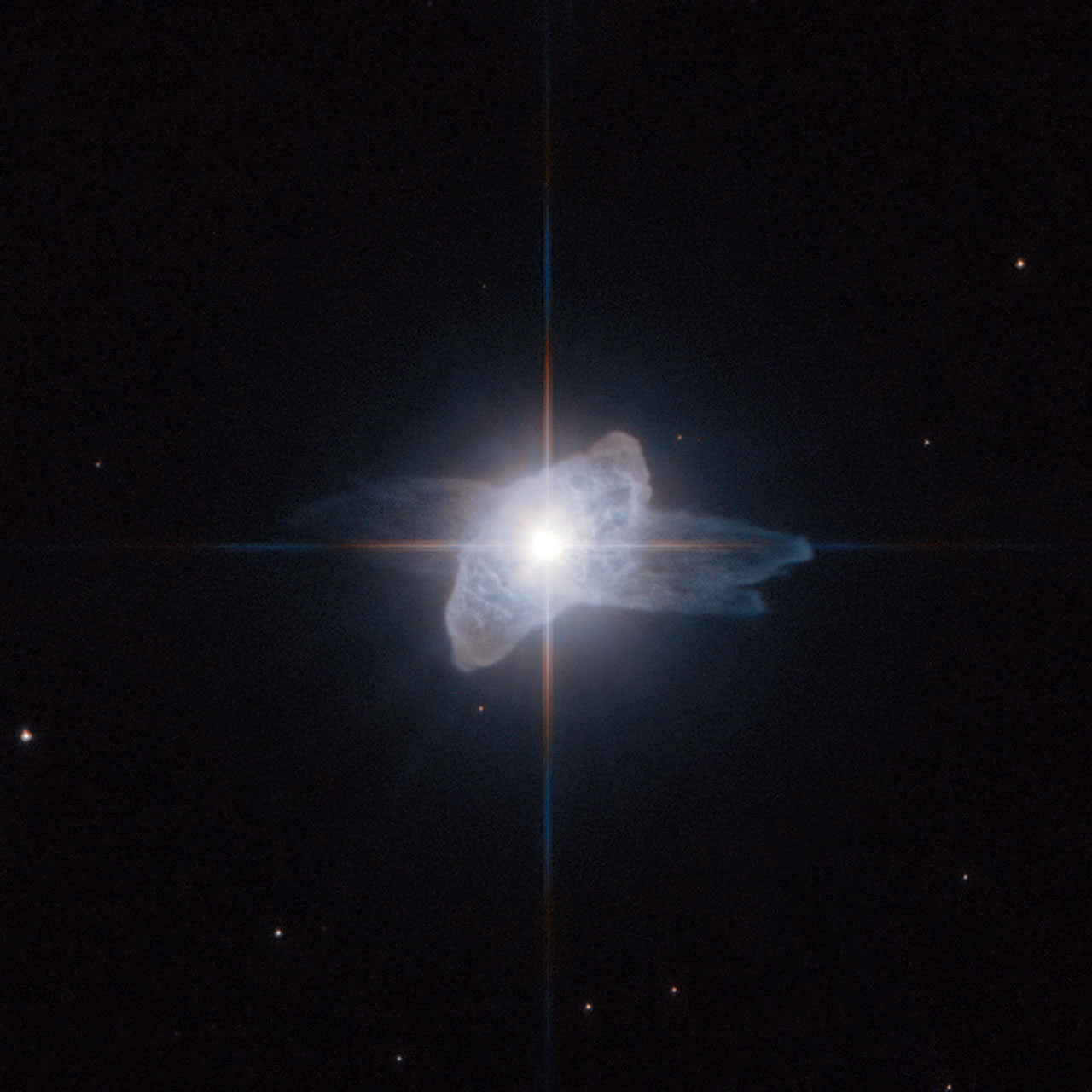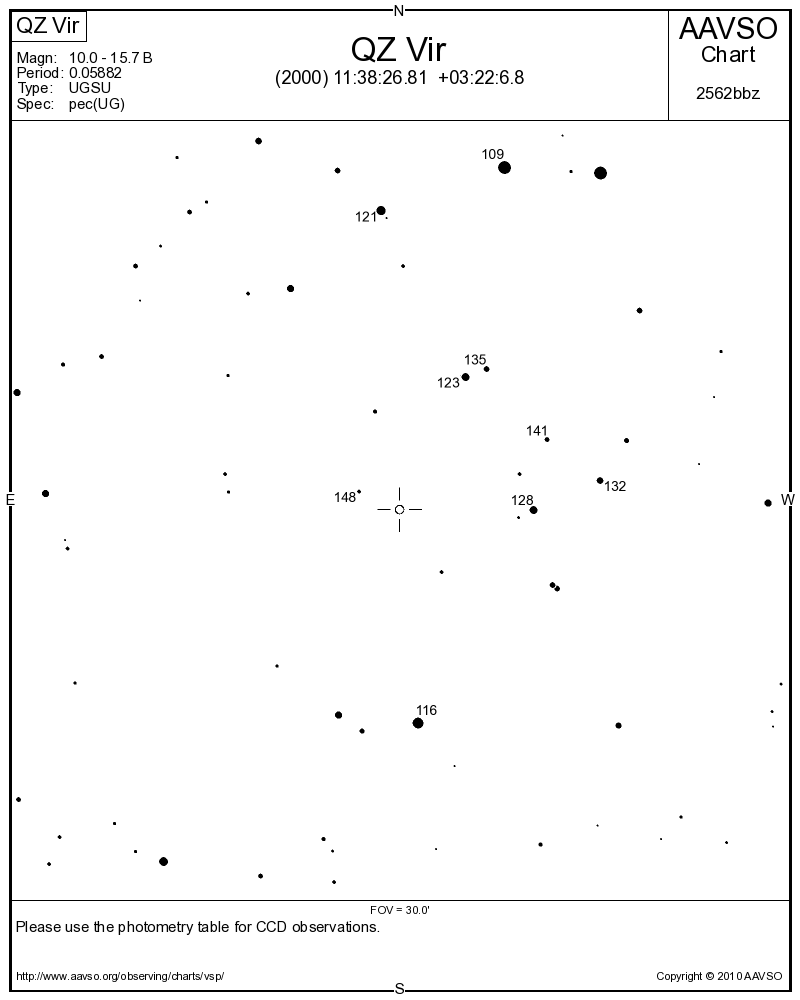[/caption]
While it’s handy for us humans (and all of the other life on our planet for that matter), the atmosphere is almost universally cursed among astronomers. It’s great for breathing, but when it comes to astronomical observations of faint objects, all the atmosphere tends to do is muck up the view. In the past 20 years, development of adaptive optics – essentially telescopes that change the shape of their mirrors to improve their imaging capability – has dramatically improved what we can see in space from the Earth.
With a new technique involving lasers (Yes! Lasers!), the images capable with an adaptive optics telescope could be nearly as crisp as those from the Hubble Space Telescope over a wide field of view. A team of University of Arizona astronomers led by Michael Hart has developed a technique that helps calibrate the surface of the telescope very precisely, which leads to very, very clear images of objects that would normally be very blurry.
Laser adaptive optics in telescopes are a relatively new development in getting better image quality out of ground-based telescopes. While it’s nice to be able to use space-based telescopes like the Hubble and the forthcoming James Webb Space Telescope, they are certainly expensive to launch and maintain. On top of that, there are a lot of astronomers competing for very little time on these telescopes. Telescopes like the Very Large Telescope in Chile, and the Keck Telescope in Hawaii both already use laser adaptive optics to improve imaging.
Initially, adaptive optics focused in on a brighter star near the area of the sky that the telescope was observing, and actuators in the back of the mirror were moved very rapidly by a computer to cancel out atmospheric distortions. This system is limited, however, to areas of the sky that contain such an object.
Laser adaptive optics are more flexible in their usability – the technique involves using a single laser to excite molecules in the atmosphere to glow, and then using this as a “guide star” to calibrate the mirror to correct for distortions caused by turbulence in the atmosphere. A computer analyzes the incoming light from the artificial guide star, and can determine just how the atmosphere is behaving, changing the surface of the mirror to compensate.
In using a single laser, the adaptive optics can only compensate for turbulence in a very limited field of view. The new technique, pioneered at the 6.5-m MMT telescope in Arizona, uses not just one laser but five green lasers to produce five separate guide stars over a wider field of view, 2 arc minutes. The angular resolution is less than that of the single laser variety – for comparison, the Keck or VLT can produce images with a 30-60 milli-arcsecond resolution, but being able to see better over a wider field of view has many advantages.
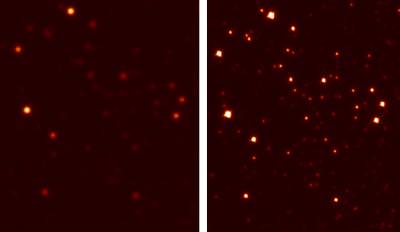
The ability to take the spectra of older galaxies, which are very faint, is possible using this technique. By taking their spectra, scientists are better able to understand the composition and structure of objects in space. Using the new technique, taking the spectra of galaxies that are 10 billion years old – and thus have a very high red shift – should be possible from the ground.
Supermassive clusters of stars would also be more easily scrutinized using the technique, as images taken in a single pointing of the telescope on different nights would allow astronomers to understand just which stars are part of the cluster and which are not gravitationally bound.
The results of the team’s efforts was published in the Astrophysical Journal in 2009, and the original paper is available here on Arxiv.
Source: Eurekalert, Arxiv paper

